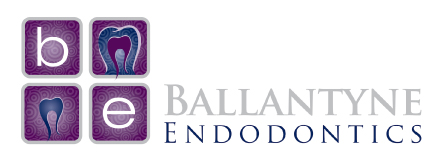Where to Go for a dental emergency? Our Guide
No matter how carefully we plan, sometimes emergencies happen. While we can’t plan for a dental emergency, we can prepare. We urge all of our patients to take the time to learn where to go for a dental emergency.
This information is intended to help you plan for your own and your family’s dental needs. It isn’t a substitute for professional and medical care. There are so many variables to any accident or emergency; only a dentist who examined you would be able to advise the most appropriate treatment.
Recognizing a Dental Emergency
Generally, teeth are strong and resilient. However, an unexpected emergency might happen at some point in your life. Learning to recognize a dental emergency is the first step in seeking timely treatment.
There are some situations that increase the likelihood of an accident or emergency. Those include:
- An accident while playing contact sports or sports like racquetball, which involve flying objects or balls.
- Car, motorcycle, or bicycle accidents.
- Tripping or falling on uneven terrain.
- Eating or biting hard foods, ice, or silverware.
- Using your teeth as tools to open bottles or do other tasks other than eating.
Awareness of risk may help you avoid dental emergencies or minimize the damage. For example, wearing a mouthguard during contact sports may prevent damage to the teeth. Of course, we can’t always anticipate bicycle or car accidents, so planning only goes so far.
What to do in case of Dental Emergencies:
Some dental emergencies may seem random. They might be the result of damage built up from chronic habits like grinding your teeth. Whether the accident is caused by sudden trauma or gradual damage, here are a few signs to look for when considering whether you need emergency care:
- A tooth fell out completely
- A tooth suddenly feels loose within the socket
- You are experiencing severe pain, sharp pain, burning sensation, or throbbing
In case of extreme pain, you may manage the pain using ice packs, cold packs, or over the counter pain medications. However, be aware that pain is a warning, so please contact your dentist’s emergency number for guidance.
If you experience sudden intense pain, tooth loss, or loose teeth, act immediately. Call your dentist’s emergency number or visit an emergency room. If traveling, research emergency medical and dental care in advance and enter the appropriate telephone numbers and addresses into your cell phone. After all, you never know when you will have an emergency.
If you or a family member loses a tooth, don’t panic! Try the following to help ensure your dentist will be able to repair the damage:
- Avoid touching the tooth’s delicate root as much as possible.
- Store the tooth in milk or in the inside of your cheek next to where the tooth belongs
- If you can, gently try to place the tooth back in its socket.
- See a dentist immediately, and if your dentist sees you within a few hours, they may be able to put the tooth back in its place.
Infection is another type of dental or oral health emergency. Some people make the mistake of overlooking signs of infection that do not involve tooth loss. Please don’t do that since some infections are potentially life-threatening.
Signs of infection include:
- A warm or hot feeling in the gums or mouth and visible redness.
- An abnormally painful, swollen area in the mouth.
- Pus or other unusual fluids draining in the mouth.
- A fever, even a slight fever.
An infection may require antibiotics. Please call your dentist’s emergency number or visit urgent care or the emergency room if necessary, to receive prompt care.
Abnormal bleeding is another sign you might need emergency dental care. If your gums are inflamed from inconsistent flossing, you may notice mild bleeding when you brush or floss your teeth. This mild bleeding is not an emergency; it is a sign you need to improve your dental hygiene habits. However, more extreme bleeding is not normal and is a dental emergency.
If you are noticing some of these signs in a child but are unsure, seek emergency care just in case. Children can’t always express themselves, but here are a few signs to look for:
- The child just fell from their bike or had a sports accident.
- If you notice a child wincing in pain while drinking or eating.
- Sudden loss of appetite.
- Unusual behavior like a normally talkative child is now silent.
- Difficulty sleeping from pain and extreme tiredness.
- Putting fingers in the mouth or running their tongue around the mouth.
- Fall from their bike or get hurt when playing sports
Where To Go For a Dental Emergency
Where to go during an emergency depends on the severity of the emergency.
If you experience a dental emergency that doesn’t seem to be life-threatening, call your dentist or endodontist’s office to schedule an emergency visit. When traveling, be sure to get an emergency contact at your destination.
Visit urgent care or the local emergency room if you can’t contact an emergency dentist or if it may be a medical emergency. For example, if a member of your family suffers a possible concussion from an accident, then visit the emergency room as they may need attention from a doctor to rule out a serious or fatal brain injury as well as any damage to the teeth.
Finally, in an urgent situation, call 911.
Follow-up Treatment
Depending on the situation, you may need aftercare from a specialist like an endodontist. After your dentist examines you, they may determine that you need a root canal or other specialized treatment.
Charlotte-area residents trust their oral health to the experts at Ballantyne Endodontics. If you need a root canal or other restoration after a trauma or emergency, contact us.
Read more: Ballantyne Endodontics

